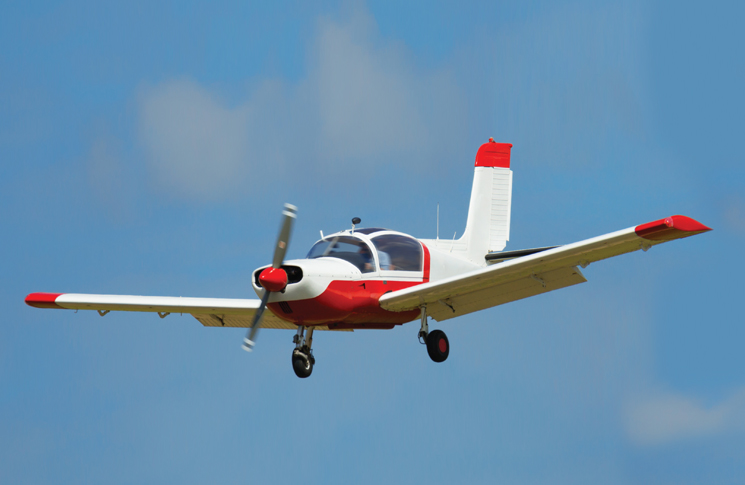Recreational pilot Luke Bayly discovers the reasons for the seemingly endless drills of his initial training
We all believe that when the time comes, we can step up to the level of our training but the reality is that instead, we are far more likely to fall to the level of our proficiency.
This was drummed into me during my early training and luckily, I have managed to maintain currency of my emergency procedures through regular practice so that when it was required, I walked away without a scratch (and so did the aircraft).
It was a cool spring morning at the local airfield and I had just finished completing a routine service on my aeroplane. Tools and rubbish were collected and, as I began to push it back into the hangar, I realised that with such perfect conditions, it would be a waste not to do a couple of circuits before heading off for the day.
So, with engine warm-up done and checks confirmed, everything was good to go and I began taxiing down to the runway threshold of a 700 m dirt strip. The throttle was smoothly advanced to full power and, as I barrelled along the runway, 45 knots showed on the air speed and I lifted the tail while scanning the gauges. Shortly after, the vibrations smoothed out to confirm I was airborne and I began my 600 fpm climb out.
Moments later, at approximately 300‑feet AGL, the engine RPM began rolling back. I immediately checked the throttle position, confirming it was still at full power. This was the real deal – an engine failure after take‑off (EFATO).
To preserve airspeed, I immediately lowered the nose to level and began scanning the 30 degrees either side ahead for a safe place to land if the engine completely failed.
It was at this point I realised, with the engine still running on partial power, I had time to get into a better position than the rough paddocks that lay ahead. With no good options to my right, I began a slow bank and turn to the left to attempt a low‑altitude circuit.
Now lined up on the runway in the opposite direction, I began working through the landing checks and balancing speed and altitude on my approach until 50 feet AGL when the engine finally cut out.
Being 50 feet off the ground, on a glide approach and without the familiar engine sound, is certainly a nerve-racking experience, but I told myself I could be scared later – right now I just had to do my job.
Being 50 feet off the ground, on a glide approach and without the familiar engine sound, is certainly a nerve-racking experience.
With a gentle flare and a couple of bounces, I managed to get the wheels solidly on the ground before applying the brakes hard to pull up around 10 metres before hitting the fence. I just sat quietly in the aircraft for what felt like 5 minutes reflecting on the previous 90 seconds of flight and then clambered out to assess my next steps.
Unfortunately, the position I was in was about the furthest from the hangars that I could possibly be. With a dead engine, I had to lift and drag the aircraft by the tail back up the runway, onto the taxiway and up a gentle slope to get it to the hangars.
Relieved to simply be back on the ground, I pushed the aeroplane into the hangar, locked up and drove away, thankful that I had survived my first engine failure. Once home and composed, I made sure to contact the relevant people and put a ticket into the RAAus occurrence management system, available on their website.
Returning to the aircraft about a week later and finding the engine had compression to start, I did a thorough run-up to try to replicate what had happened on take‑off.
After running for around 10 minutes on the ground at various RPMs, the oil finally got hot enough to thin out sufficiently to cause the pressure drop as the pump struggled to keep up. This meant that, as the pressure fell, the lubrication film began to dissipate and the engine tightened up, causing the increased friction to load it and reduce the RPM. This was something unable to be tested on the ground during typical run-up checks and only occurred once at temperature and under higher demand such as take‑off.
Lessons learnt:
Looking back on the incident, I strongly believe that because I continue to build emergency procedure routines into my general flying, this gave me the ability to maintain a level head under pressure and, more importantly, provided a practised framework for me to rely on when troubleshooting an emergency. It is not a matter of ‘if’ but a matter ‘when’ we will have to use our training to get out of these scenarios, which is why they form crucial parts of your training syllabus.
Just as we all remember the heightened state of our first solo, I hope you also remember the feeling of comfort from the framework your instructor had set in place to maintain your safety in the air. If we have not practised these frameworks regularly, then they do not exist and, when you really need it, there is no time to reference the checklist.
Have you had a close call?
8 in 10 pilots say they learn best from other pilots and your narrow escape can be a valuable lesson.
We invite you to share your experience to help us improve aviation safety, whatever your role.
Find out more and share your close call here.
DISCLAIMER
Close calls are contributed by readers like you. They are someone’s account of a real-life experience. We publish Close calls so others can learn positive lessons from the stories, and to stimulate discussion. We do our best to verify the information but cannot guarantee it is free of mistakes or errors.






Comments are closed.